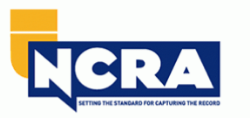Trial Presentation Innovative Technology for Engaging Courtroom Presentations
Trial Presentation Innovative Technology for Engaging Courtroom Presentations
Blog Article
Mesmerize the Jury: Essential Elements of a Powerful Test Discussion
Crucial aspects such as understanding the audience, crafting an engaging narrative, and understanding verbal and non-verbal communication are vital parts of a reliable discussion. As these elements intertwine, they develop a cohesive method that not only educates yet also engages jurors on several degrees.

Understanding Your Audience
Recognizing your target market is a pivotal element of efficient test presentation. An effective discussion depends upon the capability to comprehend the demographics, worths, and tendencies of jurors. This comprehension educates how arguments are mounted, evidence exists, and sob stories are crafted, making certain that the message resonates with the jurors on a personal level.
Research suggests that jurors originated from diverse histories and might have varying degrees of comprehending pertaining to lawful process (trial presentation). Hence, it is vital to avoid lawful lingo that can push away or puzzle them. Instead, employing clear, relatable language fosters involvement and understanding. In addition, recognizing the jurors' prospective predispositions and life experiences permits the trial presenter to anticipate arguments and address issues proactively.
Effective trial discussion likewise entails observing jurors' responses during the proceedings. Involving with jurors as individuals rather than a collective system is vital in cultivating a solid connection in the court.

Crafting an Engaging Narrative
Crafting a compelling story is crucial in assisting jurors via the complexities of an instance. A well-structured narrative not only streamlines intricate lawful principles yet additionally engages jurors on an emotional degree, making the info more relatable and unforgettable.
To achieve this, lawyers must start by recognizing the core message they desire to convey. This message needs to resonate with the jurors' worths and experiences, promoting a link that goes beyond mere realities. The narrative must unravel logically, presenting occasions in a clear sequence to avoid confusion. This chronological technique can help jurors adhere to the progression of occasions, highlighting domino effect.
Incorporating human elements-- such as personal tales or stories-- can better boost the narrative's effect. These components stimulate empathy, permitting jurors to picture the consequences of the case on the real worlds. Furthermore, employing a consistent theme throughout the presentation strengthens the primary debate, making it easier for jurors to maintain essential factors.
Inevitably, a compelling narrative transforms a trial presentation from a mere recounting of realities right into an influential tale that captivates the jury, encouraging them to ponder with both factor and feeling.
Making Use Of Aesthetic Aids
Incorporating visual aids click here to find out more into a trial discussion can dramatically boost jurors' comprehension and retention of information. Aesthetic products such as graphes, layouts, photos, and videos can transform intricate lawful concepts and proof into conveniently digestible formats. By involving several detects, these aids enable jurors to envision the situation's crucial elements, making it simpler for them to follow along and grasp complex details.
Additionally, properly designed visual aids can emphasize essential points and highlight partnerships between different pieces of proof. For example, timelines can properly illustrate the sequence of occasions, while annotated pictures can clarify certain details pertinent to the situation. This not just help in understanding yet likewise strengthens the story presented by the lawyer.
Overly complicated or messy visuals may overwhelm jurors and detract from the message. Inevitably, reliable visual communication can be an effective tool in convincing jurors and aiding them reach notified verdicts.
Mastering Verbal Communication
Effective verbal communication is critical in a trial discussion, as it offers as the main ways with which attorneys convey their arguments and attach with jurors. Simpleness in language promotes understanding and helps jurors grasp intricate problems presented during the test.
Additionally, tone and pacing substantially effect just how messages are obtained. A positive tone shares authority, while proper pacing allows jurors to absorb details without really feeling bewildered. Attorneys need to additionally vary their vocal inflections to stress vital factors and maintain jurors' passion throughout the presentation.
Furthermore, the organization of spoken debates is necessary. Structuring the narrative rationally and coherently assists jurors comply with the attorney's logic, making it simpler for them to keep crucial details. Utilizing convincing methods, such as narration, can also boost the psychological resonance of the debates offered, thus producing an extra profound link with jurors.
Inevitably, grasping spoken communication not only enhances an attorney's instance but likewise promotes count on and connection with the court, considerably enhancing the possibilities of a desirable decision.

Involving With Body Movement
Nonverbal communication plays a crucial duty in trial presentations, typically sharing messages that words alone can not express. Body movement, encompassing motions, position, facial expressions, and eye get webpage in touch with, considerably influences how jurors perceive the trustworthiness and genuineness of the speaker. A certain position, with shoulders back and an open position, can infuse depend on, while closed-off official statement body language might suggest defensiveness or uncertainty.

Facial expressions must reflect the feelings related to the instance, enhancing the narrative existing. As an example, an honest expression during an emotional moment can generate empathy and enhance the sob story. Ultimately, grasping body movement is essential for effective trial discussions, as it boosts verbal communication and develops a compelling existence that reverberates with the jury.
Final Thought
Finally, astounding the jury demands a tactical approach that incorporates understanding the audience, crafting a compelling story, utilizing visual aids, grasping spoken interaction, and involving via body language. Each element plays a crucial role in producing a powerful test discussion that reverberates with jurors on both psychological and intellectual levels (trial presentation). By incorporating these parts successfully, lawyers can substantially enhance their ability to persuade and influence jury decision-making
Report this page